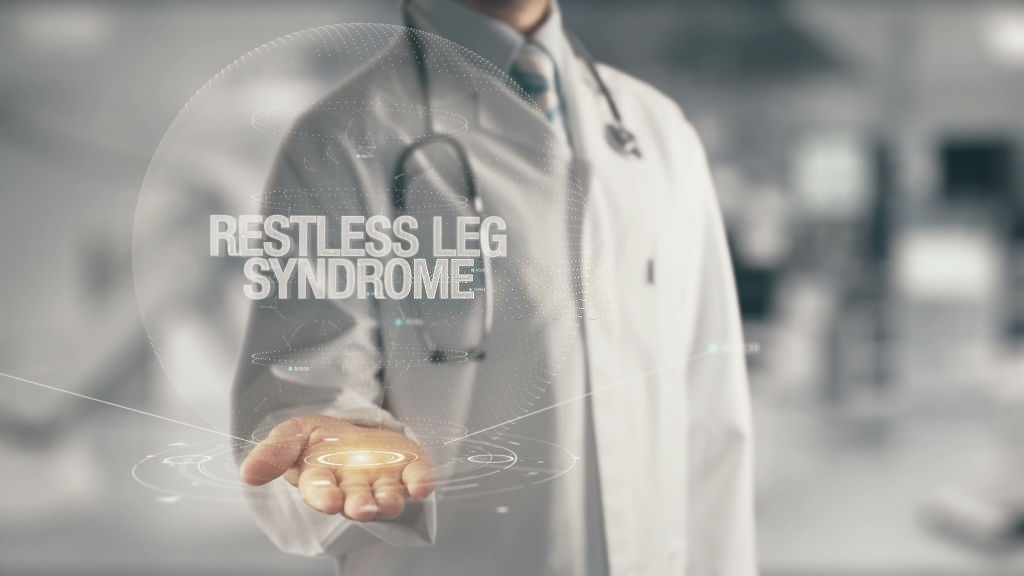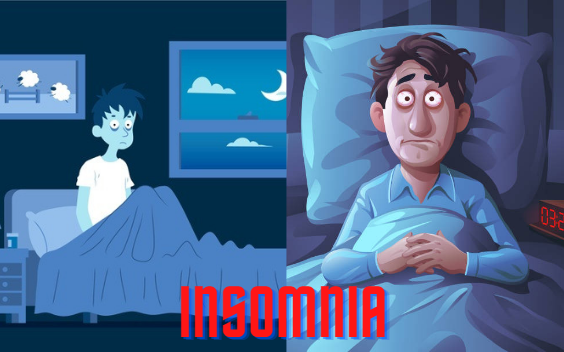Restless Leg Syndrome is a condition characterized by unpleasant leg sensations, generally before sleep onset, which leads to an almost irresistible desire to move one’s legs. RLS has a wide range of causes and symptoms, but often affects just one leg or both legs at a time.
This can result in a great deal of discomfort for those suffering from RLS.
Restless Leg Syndrome Symptoms
There are several common symptoms of RLS during the day, some of which are discussed below.
Twitching Of Leg
Among the most common, RLS symptoms during the day are twitching of the leg, which often happens on one side. While this may be uncomfortable for some people, it can also make it difficult to concentrate on tasks such as walking or reaching one’s hand out when doing so.
Cramping/ Tingling Sensation
Other RLS symptoms during the day include the feeling of being cramped in the shoes or a general tingling sensation in the feet or lower legs.
Tightness In Toes Or Feet
While there are several RLS symptoms during the day, some of these signs are more common in certain parts of the body than others. RLS symptoms in the feet and lower legs are the easiest to notice during the day. They include the feeling of tightness in the toes and the soles of the feet, as well as pain in the lower legs.
Difficulty In Walking
Other symptoms commonly associated with RLS in the feet and lower legs include difficulty walking, and the inability to bend the knees.
Chest Pain/ Headache
Some of the more common RLS symptoms in arms and shoulders include the feeling of pain or tightness in the chest, as well as headaches. One of the most common RLS symptoms during the day is a pain in the shoulders, specifically the upper chest area. This occurs in many people, especially during the day, as the feeling of tightness in the upper chest can worsen during sleep.
Soreness In Arms And Shoulders
Some of the other RLS symptoms include a general feeling of soreness or tenderness in the arms and shoulders, as well as a general sense of fatigue.
Of course, if you have RLS symptoms, you probably won’t want to spend much time sleeping anyway! Many RLS signs occur when you are active, whether it is walking, jogging, dancing, or performing any physical activity.
Pain In Back
Other restless leg syndrome symptoms are the feeling of pain in the back or abdomen or hips, and problems concentrating.
Fatigue In Arms
Some restless leg syndrome symptoms include the feeling of fatigue in arms and shoulders, as well as difficulty concentrating. For some people, this fatigue can last for several days or even weeks, but in some cases, it might not start until the next day. In some cases, the fatigue does not go away at all.
Numbness In Toes
Other restless leg syndrome symptoms include general tingling or pain in the legs or hands and numbness in the toes and fingers.
Causes Of Restless Leg Syndrome
Restless Leg Syndrome (RLS) can be an unpleasant or even painful sensation in your legs that can be brought about by many different things. Some people with RLS can feel a slight prickling feeling that begins in their lower legs or ankle. Other symptoms also sometimes occur on the rest of the body or arms.
To be adequately classified as Restless Leg Syndrome, symptoms have to worsen or get worse when you are inactive, when you sleep, or when you move or walk. Although the exact cause of RLS is not known, there are some common theories about what could trigger the condition in some people.
Obesity
One idea about the cause of Restless Leg Syndrome is obesity. When someone is overweight, they have a greater risk of developing RLS. People who are obese or overweight may have certain medical conditions that might also result in a higher chance of developing Restless Leg Syndrome.
Depression
Another theory about the cause of Restless Leg Syndrome is depression. Some studies show that people who are depressed have a higher risk of developing Restless Leg Syndrome. However, the reviews are inconclusive because depression itself does not necessarily cause the condition.
Some studies have shown that people who have been depressed for an extended period have a greater chance of developing Restless Leg Syndrome than people who have not suffered from depression.
Brain’s Chemicals
Finally, it has been theorized that the disease itself may be linked to the brain’s chemicals. When certain chemicals such as dopamine and norepinephrine are naturally produced, they may help to relax the muscles and nerves. When those chemicals are depleted, RLS occurs.
This depletion is believed to happen as a result of many different things. One of the most common causes is medication, which can be why so many people experience a variety of symptoms when taking certain medications.
Stress
Research studies show that stress can lead to the onset of Restless Leg Syndrome as well. If a person is stressed, then they may experience muscle spasms and other symptoms such as tingling in their legs. However, this does not always mean that the stress is directly causing the symptoms. Other factors can cause symptoms, as well.
Restless Leg Syndrome causes are often hard to pinpoint because symptoms can appear in so many different parts of the body at once. It can be extremely frustrating to try to identify the exact reason as many things can contribute to the condition. However, if you are concerned enough, you may want to find a doctor that specializes in RLS and see if they can give you a diagnosis.
Restless Leg Syndrome Causes
Restless Leg Syndrome causes may be very varied, but the main thing that they all have in common is that they need to be addressed by a doctor.
It is essential for a person with Restless Leg Syndrome always to make sure that their doctor has their attention when they start to experience symptoms.
Restless Leg Syndrome Tests
Many doctors will suggest that a person with Restless Leg Syndrome go through a series of tests before deciding what treatment option to use.
- The first thing that a doctor will do to diagnose Restless Leg Syndrome is to take a history.
- They will want to know about any medical issues that the patient may be experiencing and will want to know how long the symptoms have been present.
- To rule out any future medical conditions, they may even want to have a physical examination conducted.
- They will also want to know what the intensity and frequency of the symptoms are.
- Although many doctors believe that there are no underlying medical causes for Restless Leg Syndrome, it is still best to make sure.
RLS Effects Both Genders
It is essential for any men or women who suffer from the disease to talk with a doctor about how it might affect them. They will want to know whether or not they have any genetic predispositions that could be causing the problem.
Another thing that the doctor may want to know about is the person’s lifestyle. If the person has recently started a new exercise or health regimen, they may want to make sure that they are doing everything possible to prevent RLS from occurring.
Suppose you suspect that Restless Leg Syndrome may be something else that could be causing your symptoms; you may want to get a test from a lab.
A lab will look at hormone levels in the blood and test to see if RLS is present. Sometimes an analysis will show an elevated testosterone level.
If the group is high, then RLS could be a symptom of other illnesses or conditions.
There is still much more research that needs to be done to determine the exact causes of Restless Leg Syndrome. However, many things have been discovered that may help with the diagnosis. For now, however, we can say that it is essential to talk to a doctor and get the correct diagnosis to help with treatment.
Find ways to ease the symptoms and alleviate some of the discomforts that you may be experiencing.
Restless Leg Syndrome – Cure Your Raging Legs With Natural Remedies
Restless Leg Syndrome (RLS), which is more commonly known as “leg cramps,” is an unpleasant or uncomfortable twitching or tickling in your legs. Some symptoms also occur in your arms or other areas of your body.
The symptoms of restless leg syndrome should worsen with physical activity or when you sleep, worsen at night or in the morning, and increase when you move or do more physical activity.
Restless Leg Syndrome Treatment
When symptoms of restless leg syndrome during the day interfere with your ability to function, do not ignore them. Do not feel bad or guilty for being tired. You can still get the rest you need.
The first step to taking care of restless leg syndrome symptoms during the day is to try to sleep. Try to get as much as eight hours of sleep a night. It is especially important to do this for people who have insomnia, as insomnia is often a result of suffering from restless leg syndrome symptoms during the day. Many times, just having an eight-hour sleep can relieve these symptoms.
Another way to help with restless leg syndrome symptoms during the day is to drink plenty of fluids during the day. Most people will complain about their thirst and feel thirsty throughout the day, especially while eating. If they drink enough water and stay well hydrated, they will feel better throughout the day. Many people find that they can sleep longer if they have access to plenty of water throughout the day.
Many people with restless leg syndrome symptoms also find that they can relax and calm down during the day when they eat meals. Drinking water helps them to focus their mind and feel calmer.
Medications
There are a variety of treatments for restless leg syndrome. Some medicines are used for this condition. However, these can cause serious side effects.
Also, many of these medications are used to treat depression and anxiety and are not suitable for everyone.
If you are experiencing severe symptoms, it’s best to avoid using medicines because they can lead to severe side effects.
You may need to take prescription medication to treat restless leg. Cure for restless leg syndrome is available only through your doctor or at a pharmacy. If you don’t want to take prescription medicines, you may want to try some homoeopathic alternatives to treating restless leg.
Take Enough Sleep
One type of restless leg syndrome treatment is to take a restful night’s sleep each night. When you are asleep, try to think about relaxing yourself and taking a break from all the activity that you do during the day. Also, try to stay in bed when your legs feel the most uncomfortable. If you find it difficult to sleep on your back, try laying down flat instead. Try to keep your feet elevated so you won’t have difficulty sleeping on your back.
Read More: “Muscles Relaxation Techniques | What To Know“
Change Your Lifestyle
It’s essential to treat restless leg disorder before it gets worse. One of the best ways of dealing with nervous leg disorder is to change your lifestyle.
Try to get more exercise and eat a balanced diet. Eat plenty of fruits and vegetables and stay active.
It’s important to avoid spicy foods and alcohol because they will aggravate your restless leg symptoms.
Home Remedies For Restless Leg Syndrome
Other herbal remedies include ginger, goldenseal, liquorice, and chamomile. These herbal remedies are generally safe and have no harmful side effects. They are usually mild and don’t have any adverse side effects.
Homoeopathic alternatives have been proven to treat restless leg and are available over the counter and online.
Homoeopathic remedies are often more effective than prescription medication and have fewer side effects. Some of them are also inexpensive.
Aromatherapy
Aromatherapy is another alternative to treating restless leg. Using scents, such as vanilla or lemon pepper, can help to soothe nerves in the body and relax the muscles.
Exercise
Some people believe that having regular exercise can be helpful to treat restless leg. Exercise helps your body produce endorphins which can help to reduce the symptoms of this condition, by exercising, your body releases endorphins which make you feel good and relieve pain.
Chiropractic Adjustments
You can also try chiropractic adjustments and other treatments for restless leg. When your spinal joints are causing your restless leg to occur, chiropractic adjustments can help to relieve the tension and stiffness in your back and lower back.
And reduce the pressure on the legs, which is causing the legs to become unresponsive to your movements.
There is no one method of treatment for restless leg syndrome. Each person is different, and their body reacts differently to these treatments, so it’s important to try several other things before you find the right treatment for you.















0 Comments